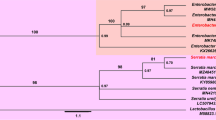Abstract
The predatory mite Typhlodromus pyri Scheuten (Acari, Phytoseiidae) has been reported as an important predator of the European red mite, Panonychus ulmi (Koch) (Acari, Tetranychidae) in apple culture and vineyards at below 25 °C. However, sufficient biological data was lacking on its efficiency at temperatures above 25 °C. Therefore, the purpose of the present laboratory work was to obtain experimental data on prey consumption during development as well as longevity and reproduction of T. pyri on apple leaf discs and in Plexiglas cells at constant temperatures of 25 ± 2 °C and 30 ± 2 °C with P. ulmi as prey.
The results showed that mean daily and total prey consumption by both the nymphs and adults of T. pyri decreased significantly on both the arenas as the temperature was increased from 25 °C to 30 °C, whereby adult prey consumption, both mean daily and total, was higher than that of nymphs. Prey consumption by both the nymphs and adults was significantly higher in the Plexiglas cells than on the leaf discs at both temperatures. Mean total prey consumption during nymphal development was 16.1 (♀♀) and 12.8 (♂♂) at 25 °C compared to 7.0 (♀♀) and 5.8 (♂♂) preys at 30 °C on the apple leaf discs and 46.0 (♀♀) and 38.5 (♂♂) at 25 °C compared to 25.2 (♀♀) and 20.3 (♂♂) preys at 30 °C in the Plexiglas cells. Mean duration of nymphal development was similar for the two sexes at the same temperature, but it was longer at 25 °C than at 30 °C. It was 6.0 and 4.0 days on the apple leaf discs while 7.0 and 6.0 days in the Plexiglas cells at 25 °C and 30 °C, respectively. Mean daily and total prey consumption by both male and female adults also decreased with the increasing temperature, whereby the females consumed more than double the mean total number of prey than the males on both the arenas of observation and at both temperatures: 355.4 versus 149.7 preys at 25 °C and 192.2 versus 85.6 preys at 30 °C on the leaf discs and 826.8 versus 374.5 preys at 25 °C and 488.9 versus 187.9 preys at 30 °C in the Plexiglas cells. Longevity of the females was longer than males on both arenas and at both temperatures and it was longer at 25 °C than at 30 °C. Mean total longevity on the apple leaf discs was 68.3 (♀♀) and 50.8 (♂♂) days at 25 °C compared to 52.5 (♀♀) and 36.8 (♂♂) days at 30 °C, while in the Plexiglas cells it was 91.0 (♀♀) and 65.8 (♂♂) days at 25 °C compared to 75.3 (♀♀) and 48.5 (♂♂) days at 30 °C. Reproduction in females also decreased significantly with increasing temperature. It decreased from 62.0 to 39.0 eggs/female on the leaf discs and 75.0 to 47.1 eggs/female in the Plexiglas cells. The females laid significantly higher numbers of eggs at both temperatures in the Plexiglas cells than on the leaf discs. Oviposition period in females was 30 days at 25 °C on both the arenas, while at 30 °C it was 26 days on the apple leaf discs and 27 days in the Plexiglas cells.
Similar content being viewed by others
Author information
Authors and Affiliations
Corresponding author
Rights and permissions
About this article
Cite this article
Sengonca, C., Khan, I. & Blaeser, P. Prey consumption during development as well as longevity and reproduction of Typhlodromus pyri Scheuten (Acari, Phytoseiidae) at higher temperatures in the laboratory. Anz. Schädlingskunde/J. Pest Science 76, 57–64 (2003). https://doi.org/10.1046/j.1439-0280.2003.03016.x
Issue Date:
DOI: https://doi.org/10.1046/j.1439-0280.2003.03016.x




